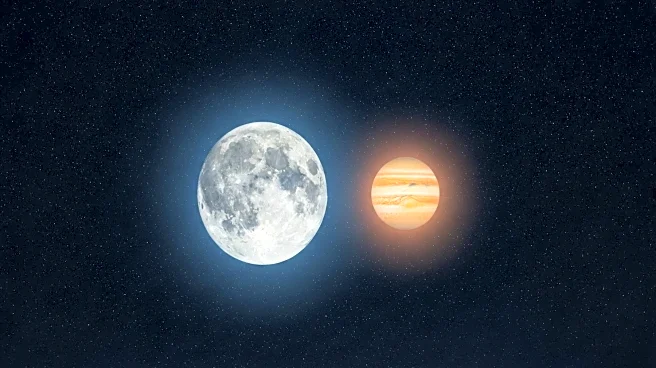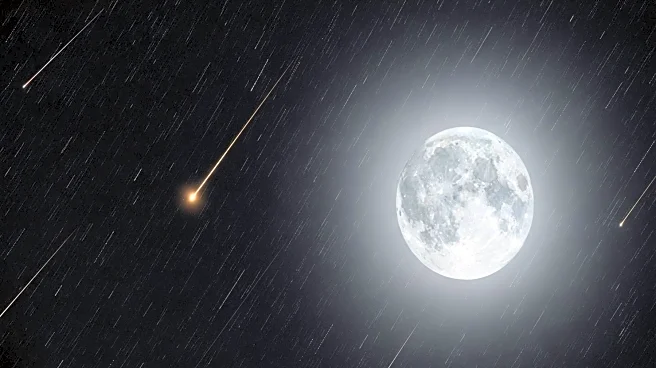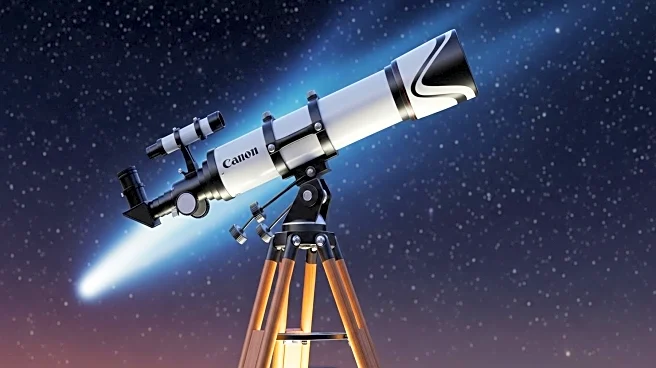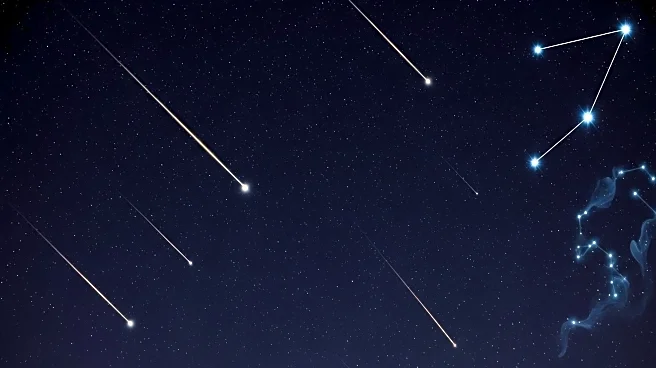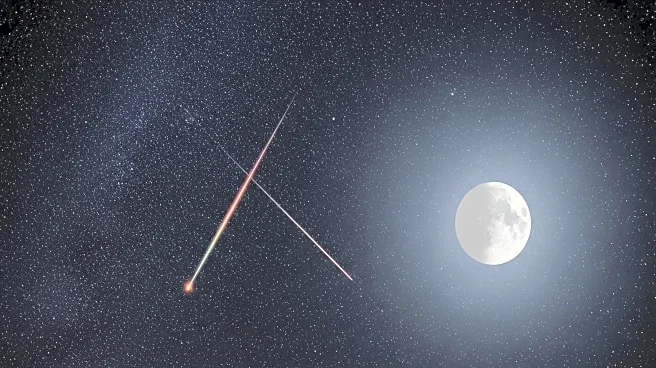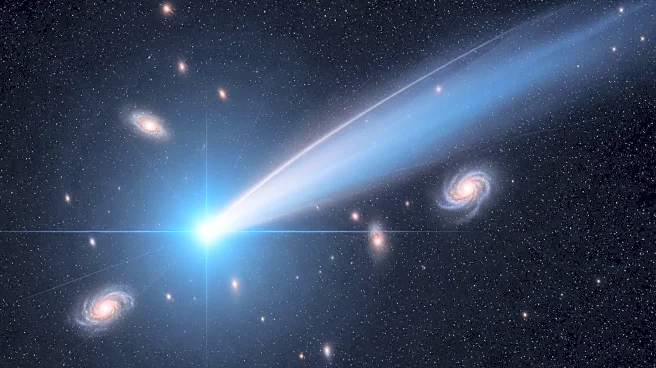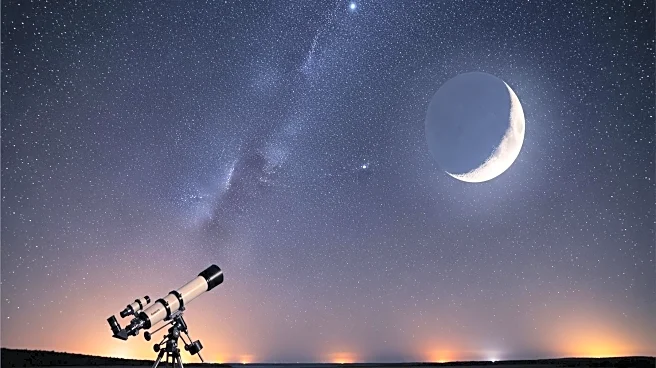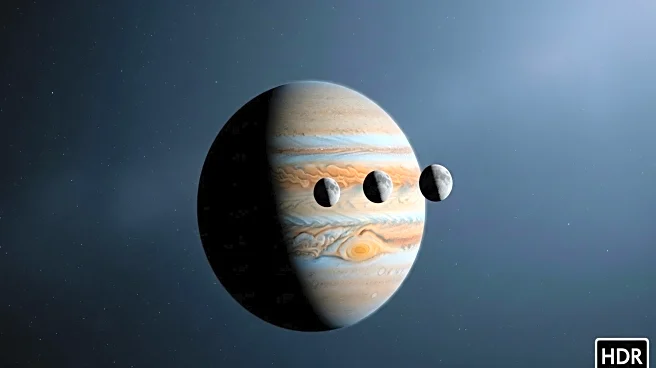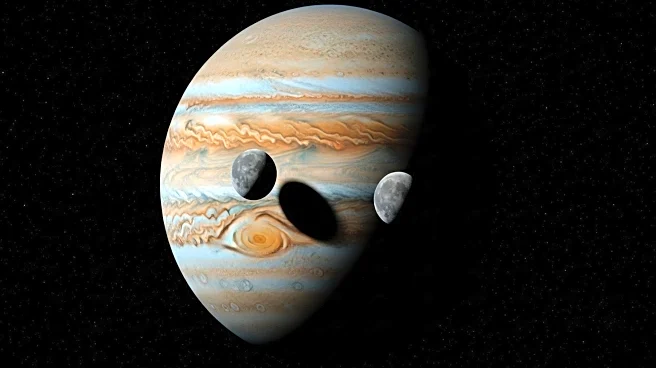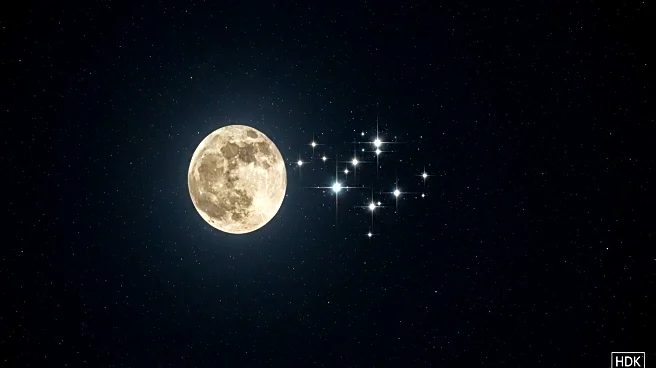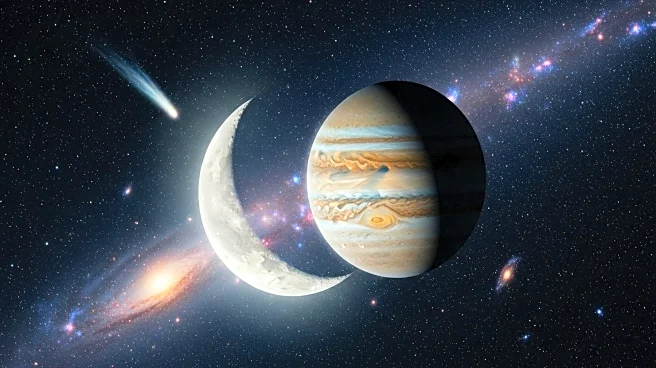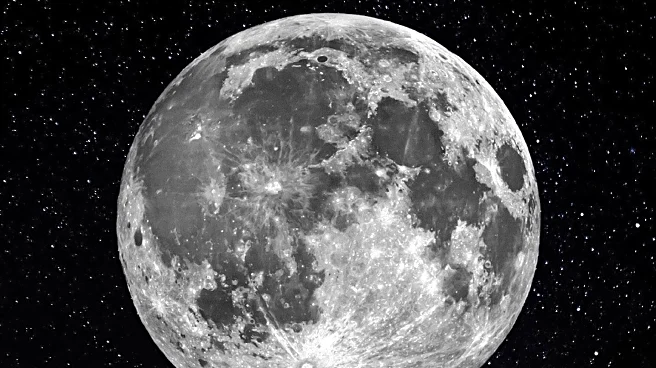What is the story about?
What's Happening?
On October 13, stargazers in the United States will have the opportunity to witness a celestial event as the moon aligns closely with Jupiter in the night sky. The moon, just past its last quarter phase, will rise above the east-northeastern horizon shortly before midnight local time, with Jupiter shining about 6 degrees to its right. This conjunction provides a striking visual, although the apparent proximity is an illusion of perspective, as the moon is approximately 235,000 miles from Earth, while Jupiter is 477 million miles away. Observers can use their clenched fist to estimate the distance between the two celestial bodies, which will appear separated by a little more than half of a fist at arm's length. Jupiter, currently located in the constellation Gemini, will be visible in the southern sky, offering optimal viewing conditions for northern observers.
Why It's Important?
This celestial event is significant for astronomy enthusiasts and casual stargazers alike, as it provides a rare opportunity to observe Jupiter, the largest planet in our solar system, in close proximity to the moon. Jupiter's position in Gemini allows it to be visible for extended periods, making it an ideal target for telescopic observation. The event highlights the dynamic nature of planetary movements and offers a chance to view Jupiter's cloud belts and the Great Red Spot, which is undergoing changes in size and shape. Additionally, the Galilean satellites will be visible, adding to the spectacle. Such events foster public interest in astronomy and provide educational opportunities for understanding planetary alignments and celestial mechanics.
What's Next?
Looking ahead, stargazers can anticipate a rare occultation event in 2026, when Jupiter will be eclipsed by a waning crescent moon. This event will be visible across much of eastern and central North America and is expected to be a highlight of the year for astronomy enthusiasts. The occultation will offer a unique viewing experience, as the crescent moon will hide Jupiter, along with its Galilean satellites, providing a stunning visual display. Observers are encouraged to mark their calendars for this event, as nocturnal occultations of Jupiter are infrequent.
Beyond the Headlines
The conjunction of Jupiter and the moon serves as a reminder of the vast distances and scales involved in our solar system. It underscores the importance of public engagement with astronomy, as such events can inspire curiosity and a deeper appreciation for the universe. The visibility of Jupiter's atmospheric features and its moons during this event also provides valuable observational data for amateur astronomers, contributing to ongoing studies of planetary dynamics and celestial phenomena.
AI Generated Content
Do you find this article useful?
